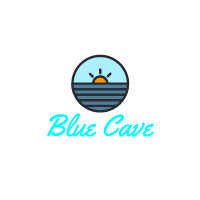The Blue Cave was formed over thousands of years by the erosive action of water on the limestone rock, which comprises the island of Biševo.
What contributed to the Blue Cave’s unique color?
The cave’s unique blue color is the result of sunlight refracting through the seawater and bouncing off the white limestone floor of the cave, which then illuminates the cave in a mesmerizing blue light.
Has the Blue Cave’s structure changed over time?
Yes, like all caves, the Blue Cave continues to undergo slow changes due to natural erosive processes. Furthermore, the entrance to the cave was artificially widened in the 19th century to allow small boats to pass through.
What type of rock is the Blue Cave made from?
The Blue Cave is made of limestone, a sedimentary rock that is particularly susceptible to erosion by water, which has led to the creation of the cave over time.
When was the artificial entrance to the Blue Cave created?
The artificial entrance to the Blue Cave was created in 1884 to allow small boats to enter. The original entrance is under the waterline and allows the reflection that gives the cave its characteristic blue color.
eps 21.0 CROATIA PART 2 | BLUE CAVE
How did the Blue Cave get its name?
The Blue Cave got its name from the deep blue color of the water inside it, caused by the sunlight reflecting off the limestone bottom of the cave.
Why is the Blue Cave blue and not another color?
The blue color is due to the specific wavelength of the light that gets scattered in the water and reflected from the white limestone bottom. Other wavelengths get absorbed, so the blue is the most prominent color we see.
Are there other caves like the Blue Cave?
While there are many sea caves around the world, the combination of the Blue Cave’s natural structure and its specific light conditions make it uniquely beautiful. However, similar phenomena can be observed in a few other places, such as the Blue Grotto in Italy.
Who discovered the Blue Cave?
The Blue Cave has been known to local fishermen for centuries, but it gained wider recognition after Austrian artist Eugen Baron Ransonnet-Villez described it in 1884.
What is the size of the Blue Cave?
The Blue Cave is approximately 24 meters long, 12 meters deep, and 15 meters high.
How long did it take for the Blue Cave to form?
It likely took thousands of years for the Blue Cave to form, as the process of water erosion on limestone is very slow.
Can the Blue Cave change color?
The color inside the cave can appear to change depending on the angle of the sun and the water clarity. However, the dominant color is always shades of blue.
Are there living creatures in the Blue Cave?
While you may occasionally see fish or other marine life in the waters of the cave, the Blue Cave is not home to any permanent residents due to lack of light and food sources.
Has the Blue Cave ever been used for human activities?
There’s no evidence that the Blue Cave was used for any specific human activities in the past, but local fishermen have known about it for centuries. Today, it’s a popular tourist attraction.
Is the Blue Cave in danger of erosion or collapse?
While the Blue Cave, like all caves, is subject to slow ongoing erosion, there’s currently no specific concern about its stability or risk of collapse.
What is the temperature inside the Blue Cave?
The temperature inside the Blue Cave is usually slightly cooler than outside, due to the shade and water. The water temperature can vary but is typically cooler than the surrounding sea.
Does the Blue Cave have stalactites or stalagmites?
Unlike some other caves, the Blue Cave doesn’t have stalactites or stalagmites as it’s filled with seawater and doesn’t have the dripping water which forms these features.
Are there similar caves in the area around the Blue Cave?
There are other caves on Biševo Island and nearby, such as the Monk Seal Cave and the Green Cave, but none have the exact same conditions as the Blue Cave.
Does the Blue Cave’s color depend on the weather?
The intensity of the blue light inside the cave can be affected by weather conditions. On cloudy or stormy days, the light might not be as vivid.
Is the Blue Cave’s color natural?
Yes, the blue color of the Blue Cave is entirely natural. It is caused by sunlight refracting through the seawater and reflecting off the cave’s white limestone floor.
Has human activity affected the Blue Cave?
Human activity has had some impact on the Blue Cave, including the artificial widening of the entrance in 1884. The increased tourism in recent years also raises concerns about potential impacts on this delicate ecosystem.
What are the rocks around the Blue Cave like?
The rocks around the Blue Cave are primarily limestone, a sedimentary rock that forms from the remains of marine organisms and is easily eroded by water.
Has the Blue Cave always been underwater?
The exact history of the Blue Cave’s formation is unclear, but it’s likely that the sea level changes over geological time have played a role in its formation.
Why does the Blue Cave glow?
The Blue Cave appears to glow because of sunlight that enters through an underwater entrance, refracts (bends) in the water, and then reflects off the white limestone floor.
Does the Blue Cave change throughout the year?
The appearance of the Blue Cave can change depending on the season and weather conditions. However, the primary structure and color of the cave remain constant.
